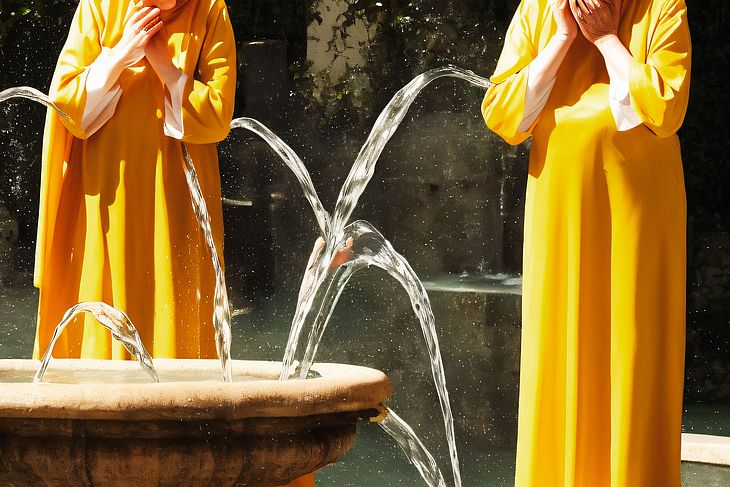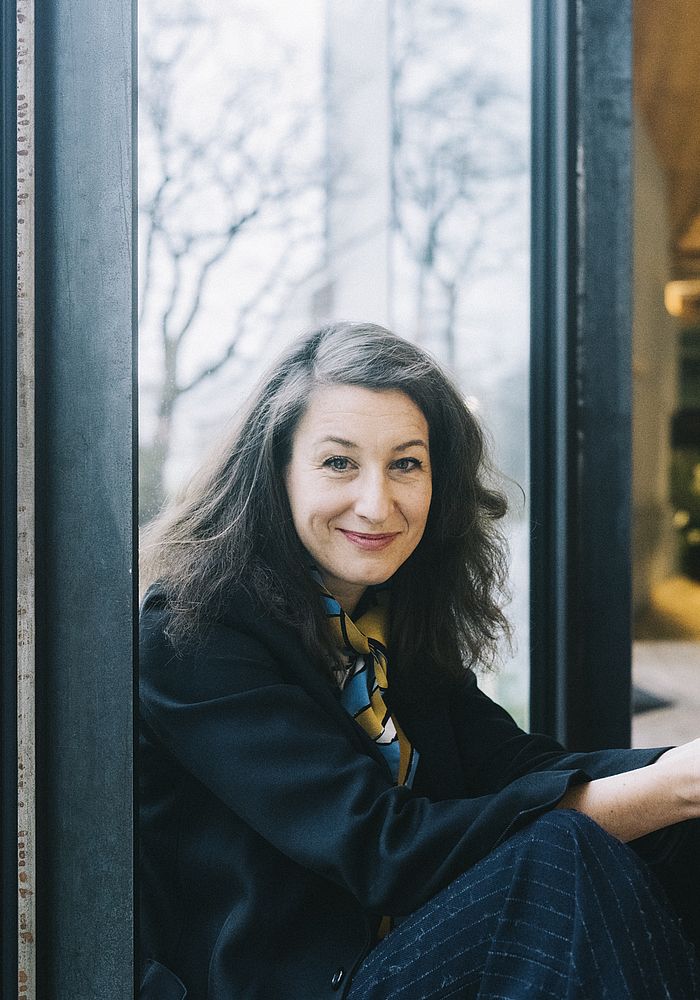Conductor PHILIPPE JORDAN
Director TATJANA GÜRBACA
Stage Design HENRIK AHR
Costume Design SILKE WILLRETT
Lighting STEFAN BOLLIGER
Costume collaboration Carl-Christian Andresen
IL TABARRO Oper in one act
Libretto GIUSEPPE ADAMI based on a work by DIDIER GOLD
Michele CARLOS ÁLVAREZ
Giorgetta ANJA KAMPE
Luigi JOSHUA GUERRERO
Tinca ANDREA GIOVANNINI
Talpa DAN PAUL DUMITRESCU
Frugola MONIKA BOHINEC
Ein Liederverkäufer KATLEHO MOKHOABANE
Ein Liebespaar FLORINA ILIE, TED BLACK
In the second series the role of Giorgetta is sung by ELENA STIKHINA
and the roles of the lovers are sung by MIRIAM KUTROWATZ and AGUSTÍN GÓMEZ.
SUOR ANGELICA Oper in one act
Libretto GIOVACCHINO FORZANO
Schwester Angelica ELEONORA BURATTO
Fürstin MICHAELA SCHUSTER
Äbtissin MONIKA BOHINEC
Lehrmeisterin der Novizinnen PATRICIA NOLZ
Schwester Eiferin DARIA SUSHKOVA
Schwester Genoveva FLORINA ILIE
Schwester Pflegerin ISABEL SIGNORET
Almosensucherin ANNA BONDARENKO
In the second series the role of Sister Angelica is sung by ELENA STIKHINA
and the roles of the Mistress of the Novices and Infirmary Sister are sung by ALMA NEUHAUS.
GIANNI SCHICCHI Oper in one act
Libretto GIOVACCHINO FORZANO based on the 30TH CANTO OF DANTE’S INFERNO
Gianni Schicchi CARLOS ÁLVAREZ
Lauretta SERENA SÁENZ
Zita MICHAELA SCHUSTER
Rinuccio BOGDAN VOLKOV
Gherardo ANDREA GIOVANNINI
Nella ANNA BONDARENKO
Betto di Signa CLEMENS UNTERREINER
Simone DAN PAUL DUMITRESCU
Marco ATTILA MOKUS
La Ciesca PATRICIA NOLZ
Maestro Spinelloccio HANS PETER KAMMERER
Amantio di Nicolao SIMONAS STRAZDAS
In the second series the role of Lauretta is sung by FLORINA ILIE,
the role of Betto di Signa by MARTIN HÄSSLER, and the role of Ciesca by DARIA SUSHKOVA.
Introductory matinee 24. SEPTEMBER 2023
Premiere 4. OCTOBER 2023
Premieren series 4. / 7. / 13. / 16. / 20. / 23. OCTOBER 2023
2nd series 14. / 17. / 20. / 24. FEBRUARY 2024

